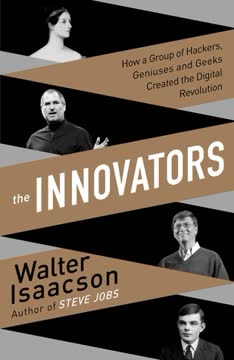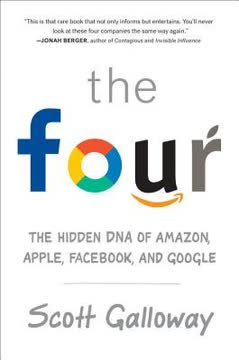Key Takeaways
1. Constraints can be powerful catalysts for innovation and growth
Constraints are rarely one-dimensional. There tend to be systems of interlocking constraints within a particular challenge that might encompass, for example, engineering, marketing, and legal.
Constraints as opportunities. Rather than viewing constraints as limitations, see them as opportunities for creative problem-solving and innovation. Constraints force us to think differently, challenge assumptions, and find novel solutions. They can lead to more efficient processes, cost-effective products, and entirely new business models.
Examples of constraint-driven innovation:
- Google's simple homepage design (constraint: Larry Page's limited coding ability)
- Nike's Flyknit shoe (constraint: reducing waste in shoe manufacturing)
- Airbnb's success (constraint: lack of capital to build hotels)
Benefits of embracing constraints:
- Forces focus on what truly matters
- Drives creative problem-solving
- Leads to more efficient and innovative solutions
- Can result in competitive advantages
2. Move from victim to transformer mindset when facing constraints
Even the most experienced and skilled transformers of constraints can find themselves with this mindset at first.
Three stages of constraint response:
- Victim: Sees constraint as insurmountable, lowers ambition
- Neutralizer: Maintains ambition, finds workarounds
- Transformer: Uses constraint as opportunity, may increase ambition
Keys to becoming a transformer:
- Believe it's possible to overcome the constraint
- Develop methods to approach the challenge
- Connect emotionally to the goal
Assessing your starting point:
- Mindset: Do you believe it's possible?
- Method: Do you know how to start?
- Motivation: How much do you want to succeed?
To move from victim to transformer, focus on improving your weakest area among mindset, method, and motivation.
3. Break path dependence to unleash creative problem-solving
Path dependence is the term, borrowed from mathematics, that is used to describe the persistence of features like the width of railway tracks.
Path dependence definition: The tendency to continue using familiar approaches, even when they're no longer optimal, due to historical success or ingrained habits.
Breaking path dependence:
- Surface and name organizational biases
- Examine key words and their meanings within your organization
- Question beginning assumptions
- Challenge routines and processes
- Explore new sources of solutions
- Reassess relationships and partnerships
- Reevaluate KPIs and success measures
Benefits of breaking path dependence:
- Opens up new possibilities
- Challenges outdated assumptions
- Encourages fresh thinking and approaches
- Helps adapt to changing environments
4. Frame challenges as propelling questions to drive breakthrough thinking
Propelling questions are, then, not merely difficult questions to answer, like "How do we double volume in three years?" or "How do we reduce cost by twenty percent?"
Propelling question elements:
- Bold ambition
- Significant constraint
- Specificity
- Authority
- Legitimacy
Examples of propelling questions:
- "How can we win Le Mans with a car that's no faster than anyone else's?" (Audi)
- "How can we build a well-designed, durable table for five euros?" (IKEA)
- "How can we grow more and better quality barley using less water?" (SAB)
Benefits of propelling questions:
- Forces thinking beyond conventional solutions
- Creates tension between ambition and constraint, driving innovation
- Provides clear direction and focus for problem-solving efforts
5. Use "Can-If" thinking to maintain optimism and find solutions
Kelly couldn't change the nature of the organization, but he could change the nature of the conversation, particularly the beginning of each sentence in the problem- solving process.
Can-If thinking process:
- Reframe "We can't because..." statements as "We can if..." statements
- Maintain flow and optimism in problem-solving discussions
- Encourage responsibility for finding solutions, not just identifying barriers
Nine types of Can-If thinking:
- We can if we think of it as...
- We can if we use other people to...
- We can if we remove x to allow us to y...
- We can if we access the knowledge of...
- We can if we introduce a...
- We can if we substitute x for y...
- We can if we fund it by...
- We can if we mix together...
- We can if we resource it by...
Use the Can-If Map to stimulate creative thinking and explore multiple solution paths.
6. Create abundance by accessing resources beyond your control
We are going to stop thinking of our resources as those we control or are given, and think of them instead as those we can access.
Four sources of potential resources:
- Invested Stakeholders: Close partners with shared interests
- External Partners: Existing relationships with potential for expansion
- Resource Owners: Organizations with abundant resources you need
- Competitors: Potential for collaboration or strategic alliances
Steps to create abundance:
- Identify potential sources of resources in each category
- Reframe your own assets to create new value
- Develop shared agendas with potential partners
- Create mutually beneficial relationships and trades
Examples of creating abundance:
- Airbnb accessing photographers within their community
- Virgin America partnering with other brands for in-flight experiences
- ColaLife using Coca-Cola's distribution network
7. Harness emotions to fuel tenacity in overcoming constraints
When a strong emotion meets a propelling question.
Importance of emotional engagement:
- Drives persistence in the face of setbacks
- Fuels creative tenacity and adaptability
- Helps maintain focus on the goal
Range of motivating emotions:
- Positive: Excitement, joy, desire to improve lives
- Negative: Frustration, fear, anger (can be equally powerful motivators)
Activating emotions:
- Use the map of activating emotions to identify personal motivations
- Create an emotional narrative around the challenge
- Practice mental contrasting: visualize both success and potential obstacles
- Keep the emotional connection vivid throughout the process
8. Learn from those who succeed with next to nothing
If you have a scarcity of the resources we need, we have to find a way to access them from elsewhere.
Strategies for succeeding with limited resources:
- Use drama and surprise to create impact
- Be interesting on the inside to generate word-of-mouth
- Elevate secondary media to primary platforms
- Form strategic alliances to scale
- Leverage other people's resources creatively
- Innovate commercially to create new value
Examples of success with limited resources:
- BrewDog's growth without traditional advertising
- Sailor Jerry rum building brand through lifestyle and grassroots support
- Heineken's creative use of packaging in France due to advertising restrictions
Benefits of the "fertile zero":
- Forces creative thinking and resourcefulness
- Leads to more authentic and engaging brand experiences
- Can result in more efficient and effective business models
9. Develop a constraint-driven culture in your organization
Far from being the domain of just a few brilliant individuals with insights applicable only to a few, the principles described in this book are a vigorous force for growth in some of the world's largest companies.
Key elements of a constraint-driven culture:
- Big ambition and strong intent
- Top-down support and empowerment
- Integration into core business strategies
- Consistency in approach over time
- Willingness to challenge assumptions and processes
- Celebration of constraint-driven successes
Examples of constraint-driven cultures:
- IKEA's ongoing focus on affordable, well-designed products
- Nike's transformation of environmental constraints into competitive advantages
- Unilever's Sustainable Living Plan driving innovation across the company
Benefits of a constraint-driven culture:
- Enhances profitability and competitive advantage
- Creates better products and services for consumers
- Strengthens ties to communities and stakeholders
- Drives sustainability and long-term thinking
10. Balance scarcity and abundance mindsets for progress
This is a unique moment in history, defined by this question: "Is this the Age of Scarcity or the Age of Abundance?"
Scarcity mindset:
- Focus on limited resources and increasing competition
- Concerns about environmental degradation and resource depletion
- Emphasis on efficiency and conservation
Abundance mindset:
- Belief in technological solutions and human ingenuity
- Emphasis on exponential growth and new opportunities
- Focus on connectivity and sharing economies
Balancing scarcity and abundance:
- Recognize the interconnectedness of scarcity and abundance
- Use constraints as catalysts for innovation and progress
- Develop capabilities to transform limitations into advantages
- Embrace a both/and approach rather than either/or thinking
Key takeaway: Progress depends on our ability to see both scarcity and abundance, using constraints as opportunities while leveraging new technologies and connections to create innovative solutions.
Last updated:
Review Summary
A Beautiful Constraint receives largely positive reviews, with readers praising its innovative approach to problem-solving and creative thinking. Many find the book's concepts practical and applicable to various fields. Reviewers appreciate the detailed case studies and frameworks provided. Some criticize the writing style as dry or overly complex, and a few mention the book could be shorter. Overall, readers value the book's insights on transforming limitations into opportunities and its potential to inspire innovation in business and personal life.
Similar Books










Download PDF
Download EPUB
.epub digital book format is ideal for reading ebooks on phones, tablets, and e-readers.





